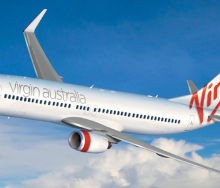The COVID-19 pandemic gave travel agencies of every stripe good reason to look for innovative solutions and revisions to their traditional pay-per-transaction business models.
The customer-focused subscription model continues to grow in popularity globally, according to data and analytics company, GlobalData.
Its popularity could continue to rise after the pandemic, and travel subscription models, in which travellers typically pay a monthly fee to receive benefits such as discounted prices and personalised travel content, could represent a compelling way for businesses to build brand loyalty.
“More and more businesses are moving away from the traditional product economy to the subscription economy... The subscription economy refers to the increasing presence of subscription-based businesses in the ecommerce landscape as opposed to the traditional pay-per-product model,” says Hannah Free, Travel and Tourism Analyst at GlobalData.
Travel companies investing in subscription services will emerge from the pandemic in a strong position to attract the tech-savvy and deal-finding travellers, GlobalData maintains.
“An increasing number of clients have shown an interest in the subscription fee model because of the clarity it brings with regard to TMC spend, as well as significantly reducing the amount of time their finance teams spend reconciling TMC invoices,” said Sandra Engelbrecht, Head of Operations at Carlson Wagonlit Travel (CWT), a multinational TMC that manages business travel, MICE operations and also handles event management.
CWT as an organisation has piloted subscription fee billing with a select group of clients over the past year.
The subscription fee model was unique in many ways, Engelbrecht explained. It was not only an efficient solution to help TMCs manage their travel cost more effectively, she said, but it was worth bearing in mind that there would always be a number of remuneration models in the travel environment driven by influencing factors, such as the corporate customers’ internal requirements, deployed technology platforms, and processes.
“Subscriptions represent a compelling way for travel companies to create lasting relationships where engagement typically ends after a one-off transactional purchase. According to GlobalData’s Q1 2021 Consumer Survey, 35% of global respondents consider time-saving a key factor driving purchase, while 46% consider time-saving nice to have, but not essential,” said Free.
“The subscription model is well placed to capitalise on increasing consumer demands for personalisation, while the value and convenience enjoyed by members has the potential to outweigh a monthly subscription or membership fee. Subscription models have the potential to completely transform an industry that faces challenges such as seasonality and growth-decline cycles by ensuring a relatively stable revenue stream,” she said.
Not a one-size-fits-all
“2022 has highlighted, once again, how different each corporate customer is,” said Engelbrecht. “These differences will always mean that the TMC will have to find new, innovative solutions to manage the entire travel life cycle, from start to end. The subscription model is the perfect solution for some corporates, but it is definitely not a one-size-fits-all approach.”
Initially, there might be those South African TMCs that partially re-allocate some services to a subscription model with clients, but for the most part, a hybrid model of transaction and management fees, with a subscription model for certain services, was likely going to take precedence, maintained Monique Swart, Founder of the African Business Travel Association (ABTA).
Swart agreed that subscription models could transform travel. “In a perfect world, this would be the case, as many TMCs have struggled historically with remuneration structures that are transaction-based, and there are still those that struggle with cash-flow issues, having to bank-roll their clients’ travel expenses, and then only getting paid sometimes up to 90 days later.
“To my knowledge, this is still something being discussed in theory, but not yet largely implemented. I don’t know offhand of any South African-based TMCs who are fully on this model,” she said.
Swart sees the major challenge being that the TMC would have to sell clients a completely new model, and until there are enough TMCs doing this for it to be considered the norm, clients may continue to push back for quite some time.
“The appeal of the model for the TMC is clear, as it would allow a more consistent income stream. But where clients might be used to having received certain services ‘free’, now having to pay for them will not appeal. However, clients should look at the big picture and the stability that this will bring to the industry and their supply chain,” Swart points out.
In addition, they will then consistently receive services that under the transaction-fee model may have been sporadic when they used to be ‘free’. Access to relevant, regularly updated information is one of these services. It is still sorely needed and absolutely should come at a cost.
“I think the subscription model will still take quite some time to take off, but if and when it does, the industry transformation resulting from it would be extremely positive,” said Swart.














